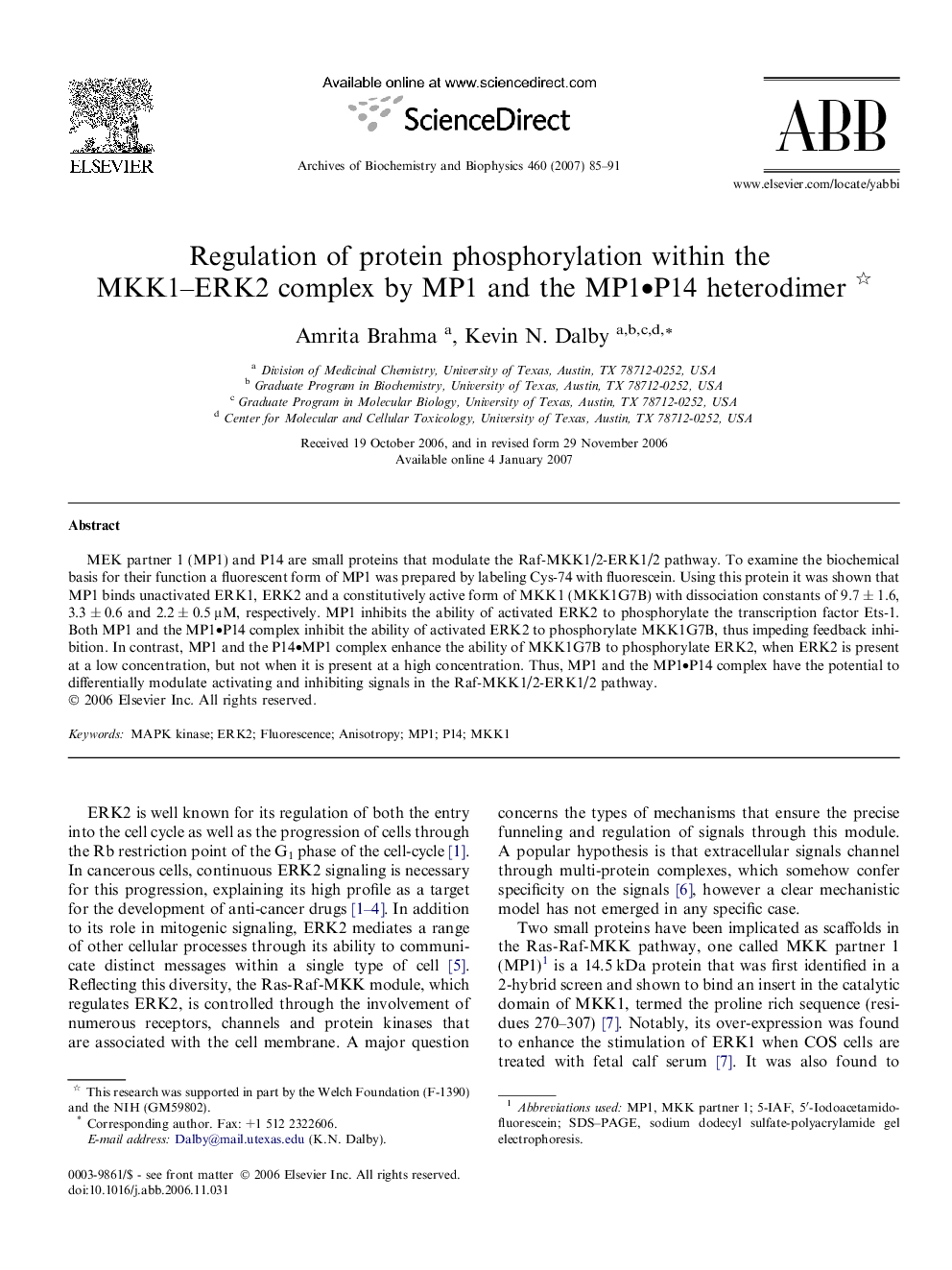| Article ID | Journal | Published Year | Pages | File Type |
|---|---|---|---|---|
| 1927242 | Archives of Biochemistry and Biophysics | 2007 | 7 Pages |
Abstract
MEK partner 1 (MP1) and P14 are small proteins that modulate the Raf-MKK1/2-ERK1/2 pathway. To examine the biochemical basis for their function a fluorescent form of MP1 was prepared by labeling Cys-74 with fluorescein. Using this protein it was shown that MP1 binds unactivated ERK1, ERK2 and a constitutively active form of MKK1 (MKK1G7B) with dissociation constants of 9.7 ± 1.6, 3.3 ± 0.6 and 2.2 ± 0.5 μM, respectively. MP1 inhibits the ability of activated ERK2 to phosphorylate the transcription factor Ets-1. Both MP1 and the MP1
- P14 complex inhibit the ability of activated ERK2 to phosphorylate MKK1G7B, thus impeding feedback inhibition. In contrast, MP1 and the P14
- MP1 complex enhance the ability of MKK1G7B to phosphorylate ERK2, when ERK2 is present at a low concentration, but not when it is present at a high concentration. Thus, MP1 and the MP1
- P14 complex have the potential to differentially modulate activating and inhibiting signals in the Raf-MKK1/2-ERK1/2 pathway.
- P14 complex inhibit the ability of activated ERK2 to phosphorylate MKK1G7B, thus impeding feedback inhibition. In contrast, MP1 and the P14
- MP1 complex enhance the ability of MKK1G7B to phosphorylate ERK2, when ERK2 is present at a low concentration, but not when it is present at a high concentration. Thus, MP1 and the MP1
- P14 complex have the potential to differentially modulate activating and inhibiting signals in the Raf-MKK1/2-ERK1/2 pathway.
Related Topics
Life Sciences
Biochemistry, Genetics and Molecular Biology
Biochemistry
Authors
Amrita Brahma, Kevin N. Dalby,
